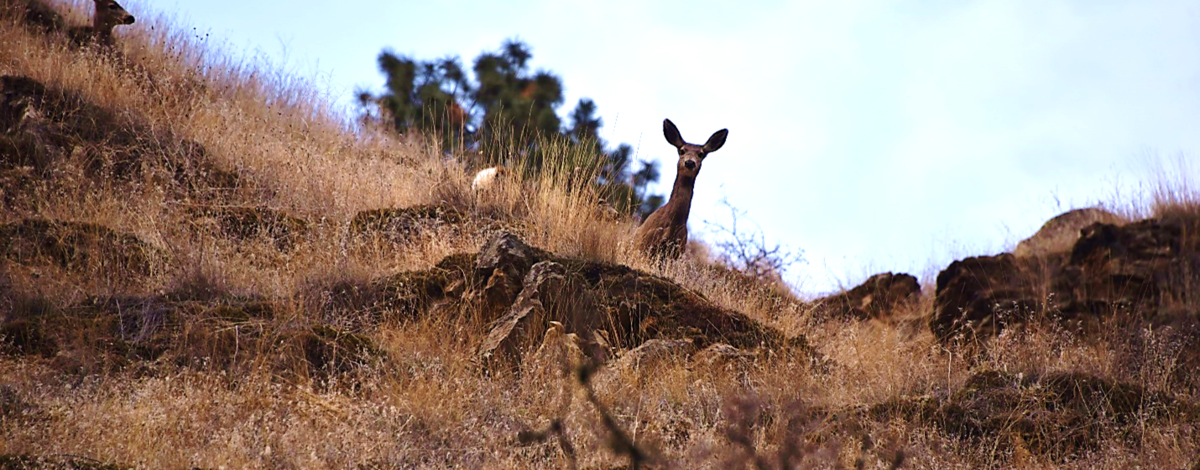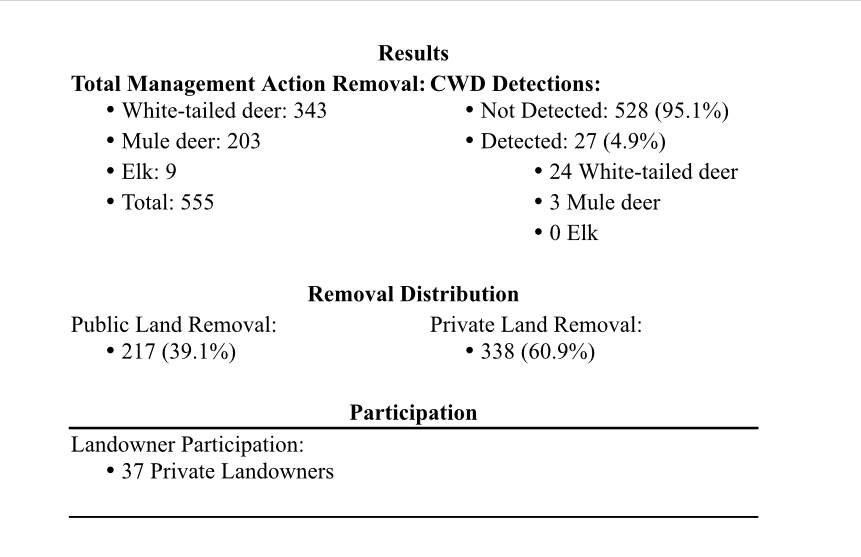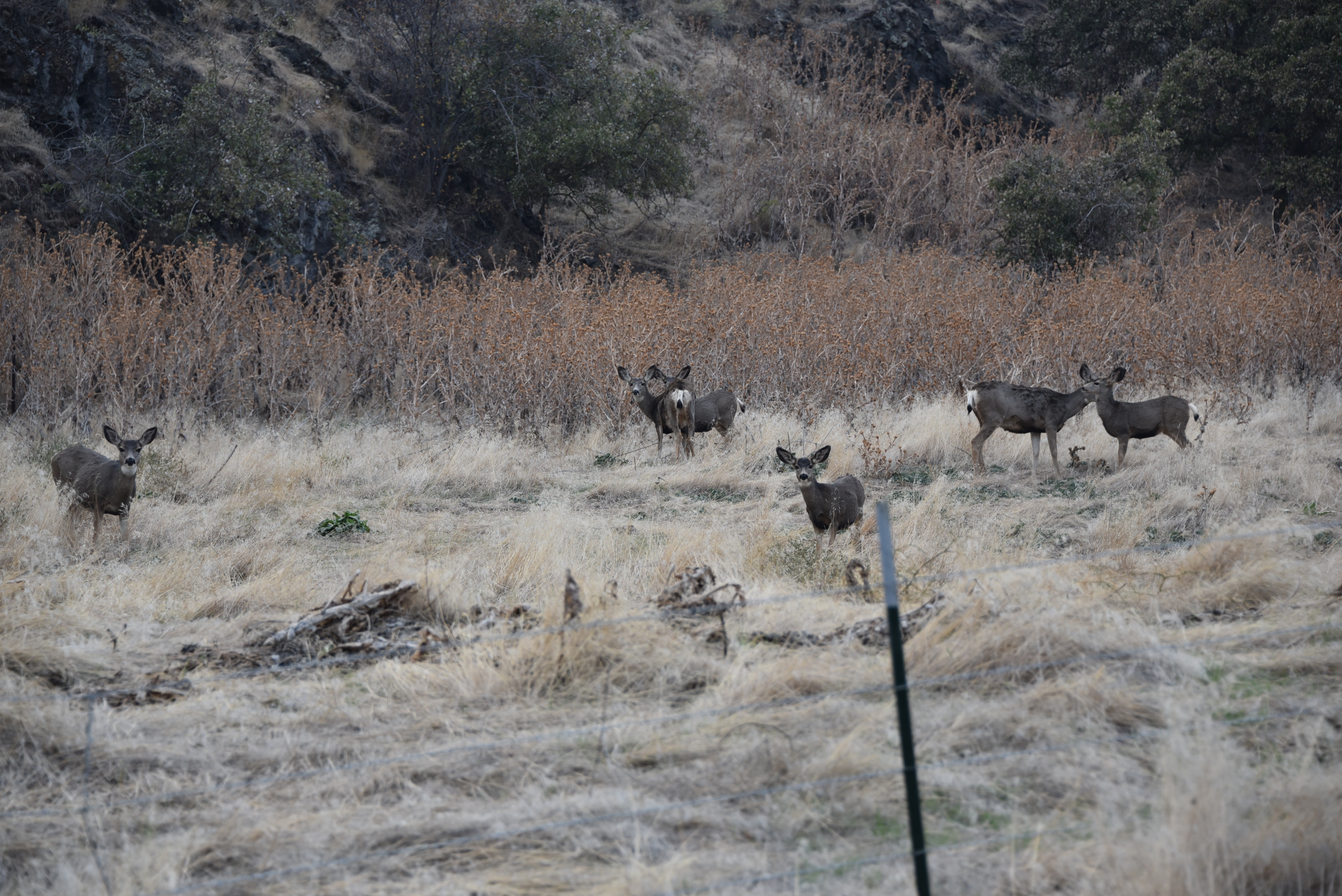Idaho Fish and Game and Commission would like to express gratitude for all of the participation in the Chronic Wasting Disease (CWD) Management Action that occurred across the McKinzie Creek, Slate Creek, and John Day Creek drainages this past winter/early spring. As CWD was initially detected in this area in 2021, managers were faced with the difficult decision to reduce deer densities. This mission was highly contingent on the support of both the community and local landowners.
Results
Idaho Fish and Game with the help of Wildlife Services and local landowners, removed and tested 555 animals, which consisted of 203 mule deer, 343 white-tailed deer, and 9 elk. Of the animals removed and tested, we detected a 5% overall positivity rate from a total of 27 animals positive with chronic wasting disease. This included 3 positive mule deer and 24 positive white-tailed deer. None of the elk that we tested resulted in a positive sample. Although a 5% positivity rate may seem low, managers learned from other CWD positive states that 5% is the threshold where population declines/effects start to occur. The rate of spread outside of a known CWD area increases significantly when a 5% CWD positivity is reached. When CWD was detected in Idaho, Fish and Game managers wanted to act quickly to reduce or limit the spread of this fatal disease.
"This project was a substantial effort to reduce animal densities and slow the spread and prevalence of chronic wasting disease, and it would not have been possible without all the help and participation that we received from our landowners and community partners. While none of us wanted to see these animals removed, this effort will benefit wild deer and elk populations, not only in the area where the project took place, but throughout the state," says regional wildlife manager, Jana Ashling.



